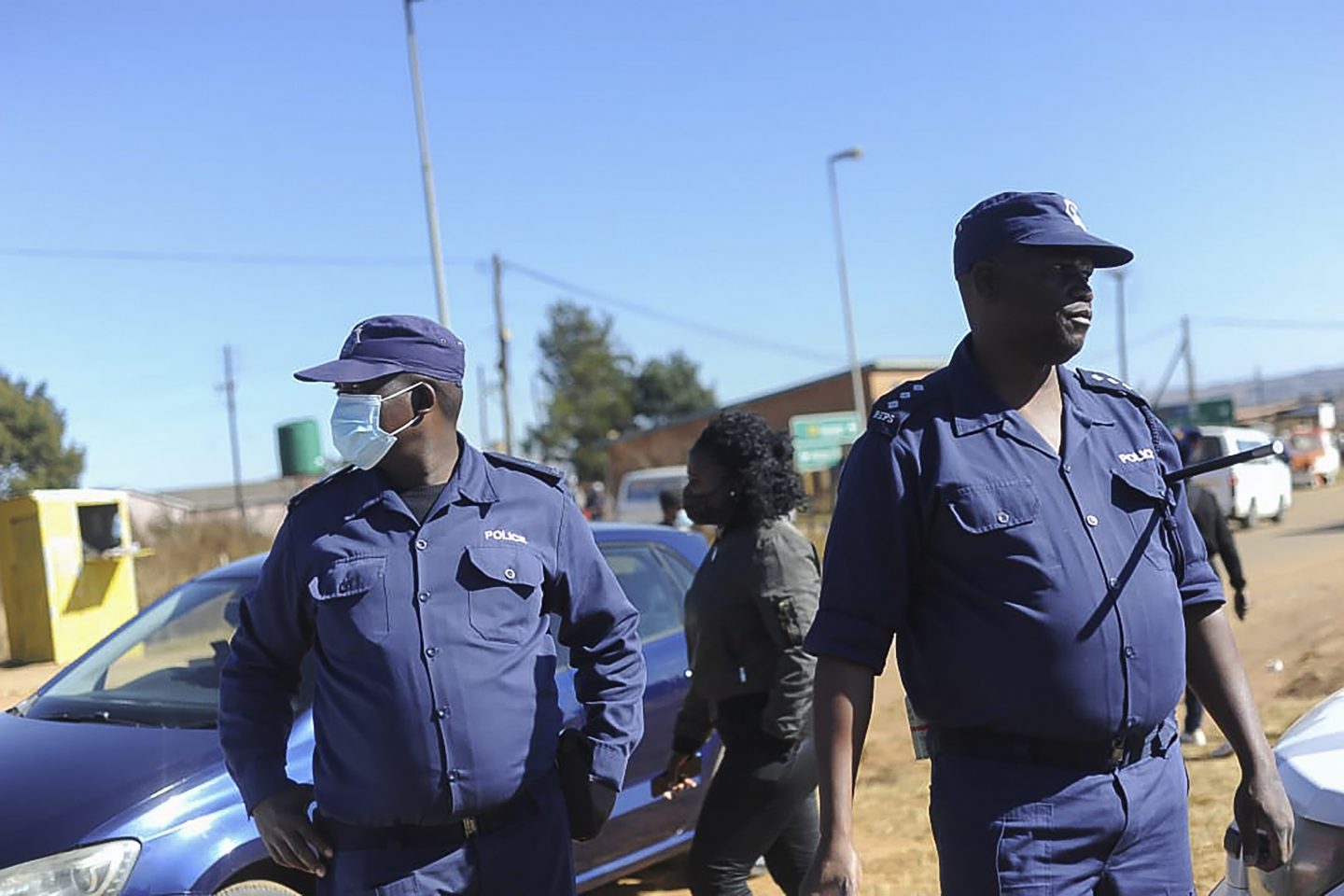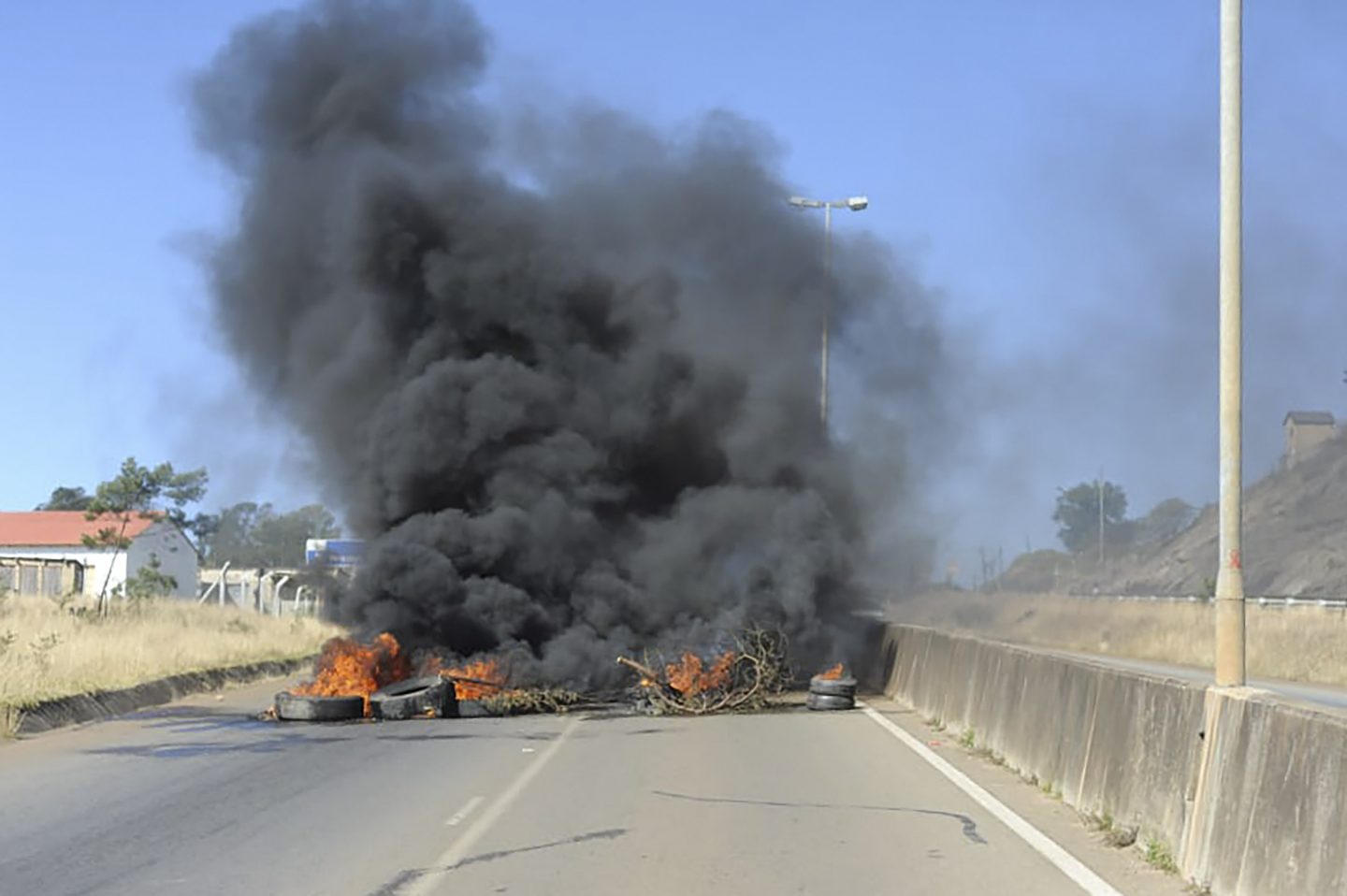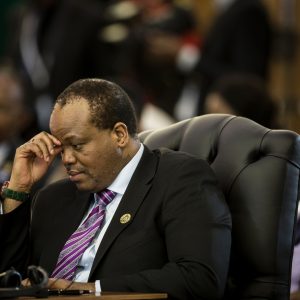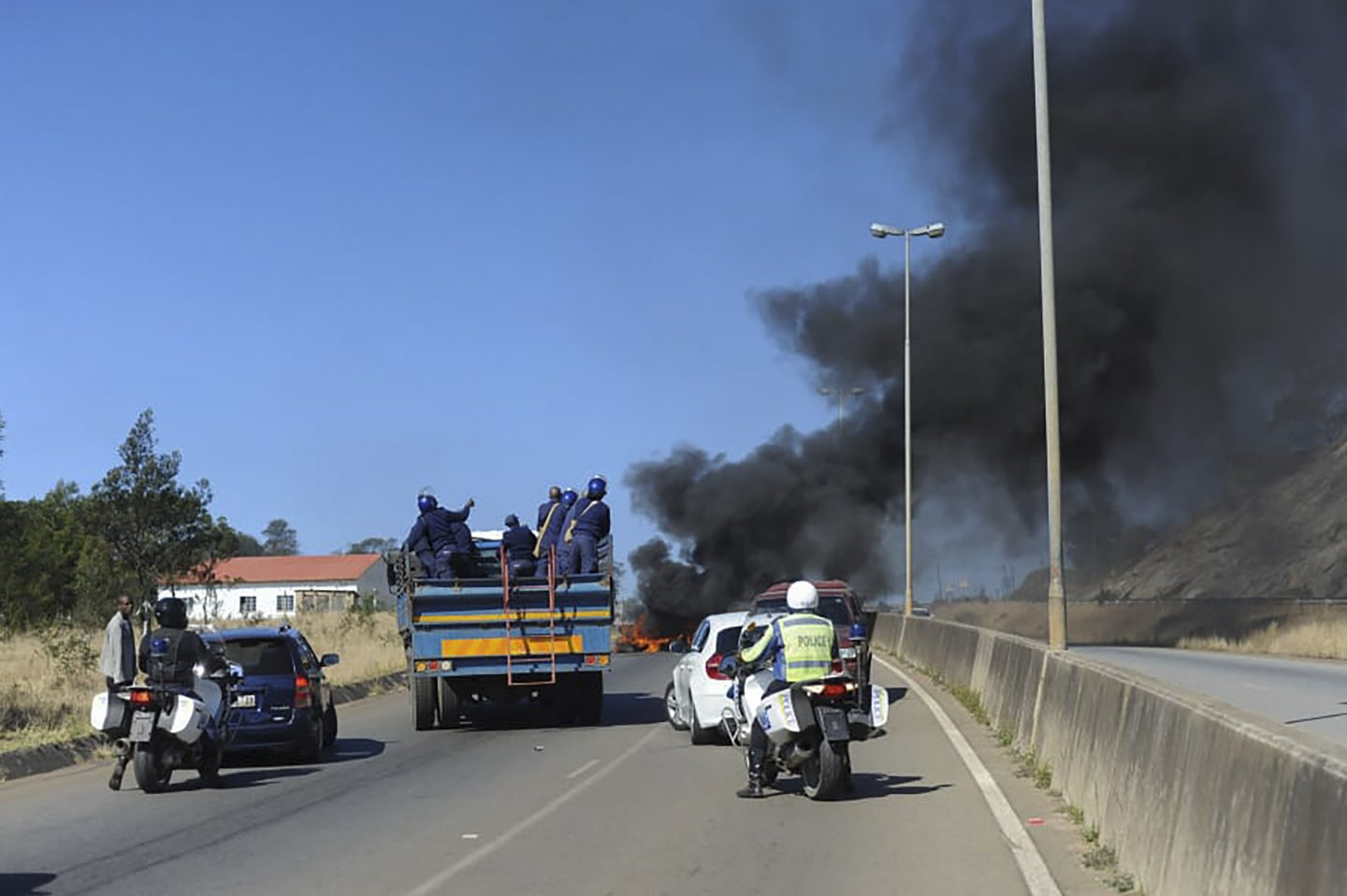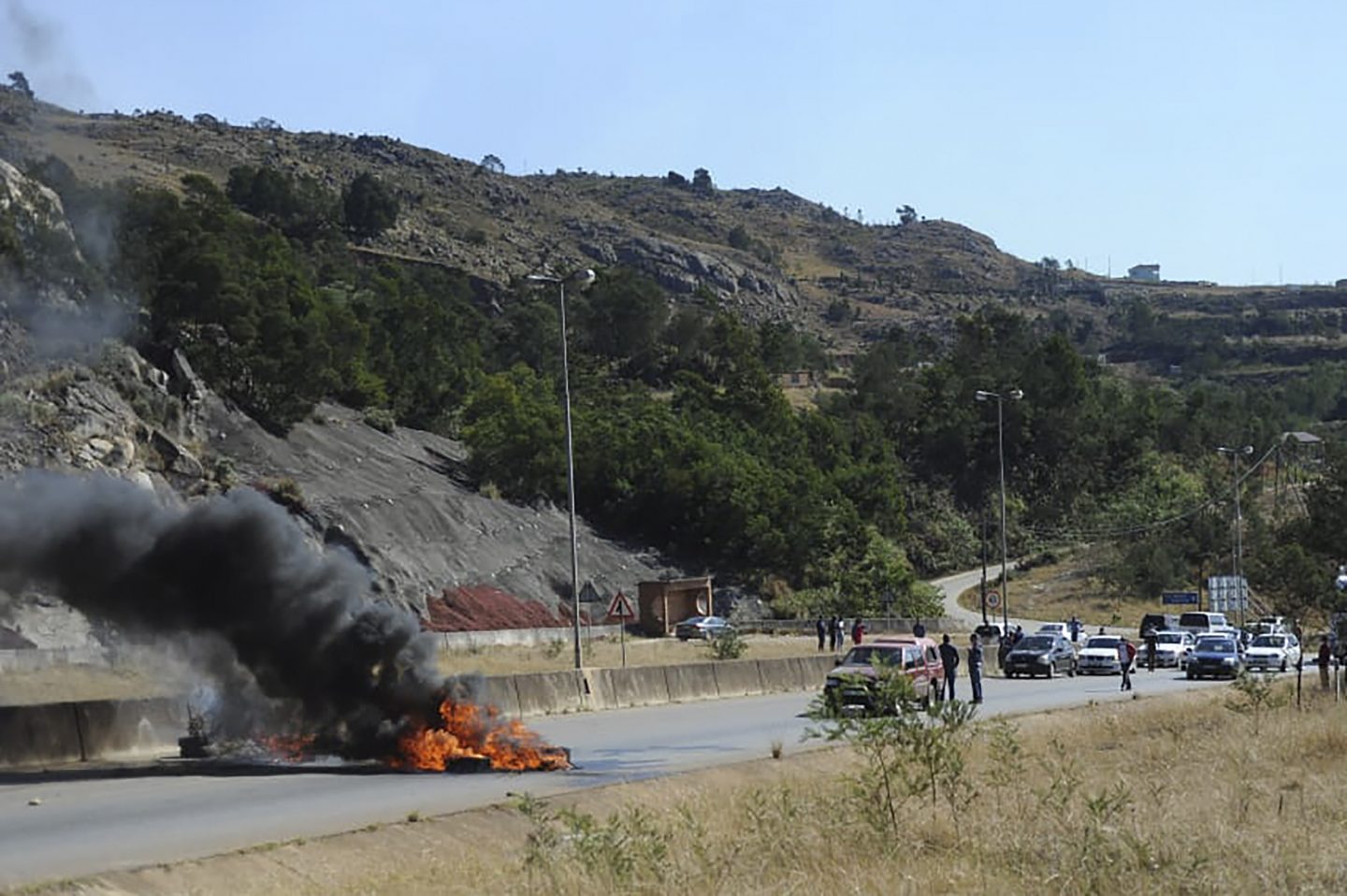The voice of the people rises in eSwatini
Sparked by the death of Thabani Nkomonye, protests in eSwatini quickly escalated to encompass the bigger issue of the lack of democracy when it comes to elected government.
Author:
30 June 2021
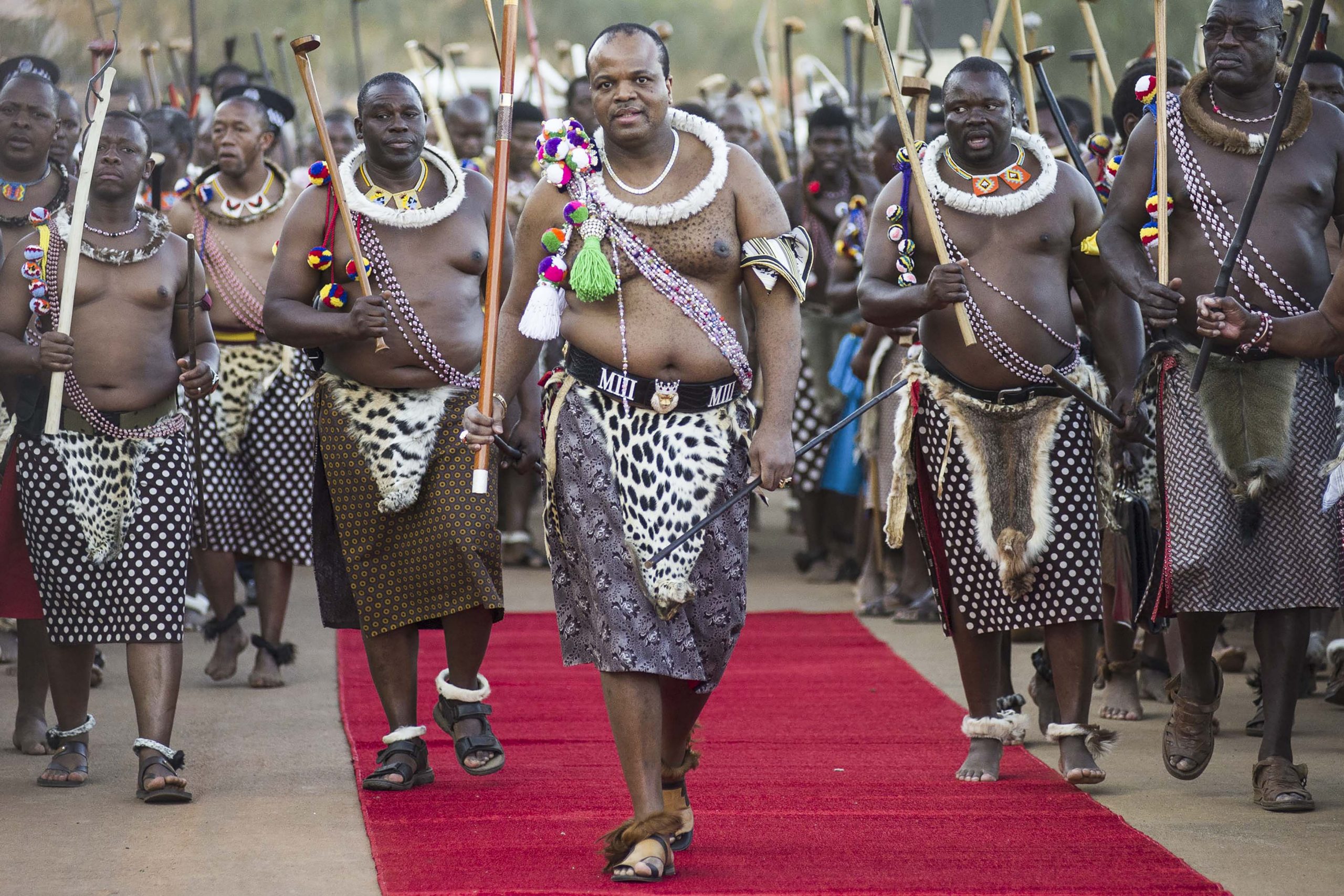
The eSwatini government reacted with force to protests against the dictatorship in the country. It imposed a curfew and blocked the internet in response to pro-democracy demonstrations sparked by the death of Thabani Nkomonye, allegedly at the hands of the police.
The government closed schools immediately and banned gatherings, using Covid-19 as a convenient excuse for its attempt to quash the most significant resistance the country has faced during King Mswati III’s rule.
Nkomonye, a 25-year-old law student at the University of eSwatini, died under mysterious circumstances on the weekend of 7 May. His family went to the police when he didn’t appear and the Royal eSwatini Police Service communications office published a notice on 11 May inviting members of the public to help look for Nkomonye and his car. But his family got a tip-off that his wrecked car had been towed from the MR9 road between Nhlambeni and Ka-Shali, and was now at the Sigodvweni Police Station. Nkomonye’s family suspects that the police, who are notorious for violence and abuse, were somehow involved in his death, fuelled by their inconsistent conduct and statements regarding the matter.

Nkomonye’s death, and what is widely suspected to have been a botched cover-up, was followed by a wave of anger and loud calls to hold the police accountable. Public uproar went beyond the #JusticeforThabani social media hashtag as people poured into the streets. This anger and subsequent protests morphed into a rallying cry around other issues, the main one being the call for citizens to elect the prime minister instead of the king hand-picking the person for the job. Throughout, the government has reacted with force.
The police arrived at Nkomonye’s memorial service in Manzini on 21 May in armoured cars and threw tear gas canisters at the bereaved. Then they pursued the fleeing mourners while firing rubber bullets at them. Several people were injured as they fled to neighbouring homes and a number of women had to be carried away as they struggled to breathe after inhaling tear gas while running.
“I was at the memorial service at St Paul’s and was invited by the Nkomonye family … What I saw on that day, I had never experienced before. I was sprayed with tear gas while sitting down, without any reason,” said Hosea member of Parliament Bacede Mabuza.
Rather than quashing the protest, the violence spurred on emaSwati and led to petitions calling for reforms in the 59 constituencies. Acting Prime Minister Themba Masuku issued a decree banning the petitions before all of them were handed over, proposing that they be delivered by email instead. But some say the email address provided doesn’t work.
War-zone ruins
A night of protests on Monday 29 June in Matsapha, eSwatini’s main industrial town, saw stores and trucks torched and several people injured.
Workers, ready for a near normal resumption of their day, found padlocks on the gates of firms and combat-ready soldiers, who told them to go home. This was before 7am. One political leader – the Trade Union Congress of eSwatini’s Mduduzi Gina – drove around Mashayitafula and Logoba. He likened the aftermath of the Monday night protests to war-zone ruins.
“My brother, OK Foods was burned. And there is a truck right in front of the store that caught fire as well. And in Logoba, by the footbridge, another one.”
Also burned?
“Beyond recognition, my brother.”
Seeing no police cars or personnel on the road and in places like Ndlunganye, he described the silence as strange, foreboding, like something bad was about to happen. Until he saw some trucks.
“It is soldiers, my brother. Soldiers, yes. In trucks, but some are walking about. Here by Mashayitafula.”
As protesters’ fires raged late on Monday, there were reports that King Mswati III had fled the country.
Roads blocked and ranks closed
In the northeast of the country, the morning began without incident.
The MR3 Highway, from Ngwenya Village near the border to Mbabane, seemed deserted. What motorists there were drove with trepidation. With reports spreading of Mbabane catching fire, getting on the road seemed a risk not worth taking for many. As one Honda Fit driver said: “It’s war, man. The cars will catch fire.”
But there was no one in Motjane waiting with petrol to set people’s cars on fires, only excited young people shouting “Viva!” and other “revolutionary” slogans. It was here that the police thwarted a strike on Saturday 26 June. And up in Nkoyoyo, where burning logs and tyres had blocked a road for at least an hour that day, young men were already rolling the tyres aside, seemingly getting ready for their day’s “work”.
Related article:
Cars were slowing at the crown of the Nkoyoyo hill, beside the king’s palace, their hazard lights on. Excited locals walked from Makholokholo, shouting: “Kuyanyiwa ekasi, mfethu. Hamba ku-highway (It’s tense in the township, man. Stick to the highway).”
Sticking to the highway did not work, however.
Boulders in the road just after the Makholokholo exit were forcing drivers to turn back and pass through the township to reach Sidvwashini or Mbabane. And with bus ranks closed in the capital and its peripheries, people who had tried to go to work were returning home by 10am. An army helicopter circled Sidvwashini from time to time, only dropping two tear gas canisters hours later, just after 12pm.
Police brutality an enduring problem
Closed roads and a blocked highway made it almost impossible to get to Mbabane. At the Ngwenya/Oshoek border post, word went around that there were South Africans marching in solidarity with eSwatini citizens fighting for political change. Reports suggested that, clad in the red of organised workers, grassroots activists, socialists and communists, they tried entering the eSwatini side, too.
Capturing this on camera proved difficult. The police stopped me, ordered me out of the car and told me to delete my photos when they saw my camera. “Shut up! Who gave you permission to take pictures of what’s going on?” Before I could answer, I was told to do 20 press-ups – using my fists. On press-up number three, the officer said, “Stop! You see that cow over there? Go pull it by the tail and bring it here.”
Fortunately, I didn’t have to follow through on that order. But there was a stern rebuke afterwards. “We are not on this road because we are fools. Stop taking pictures of us, of this. Stop encouraging the anarchy.”
A 2018 report by the International Commission of Jurists, Achieving Justice for Gross Human Rights Violations in Swaziland, found that “the state continues to be either actively involved in, or turn[s] a blind eye to, torture. Reports of suspects dying in police custody, workers assaulted by state police, suspects shot and killed by the army, as well as suspected poachers tortured and killed by game rangers and private farm owners have come to characterise law enforcement in Swaziland.”
Siphofaneni member of Parliament Mduduzi Simelane went so far as to say that police brutality continues to be an enduring problem in eSwatini because the system of governance enables it. He said police do as they please because they are not accountable to the nation at all but to the powers that be, even linking the current police problems to the choosing of the prime minister.
“No one still wants an appointed prime minister. Not because the appointed hand is wrong, let me say that, but because the appointed person tends not to understand the pain of the people. We have been in this experiment for many years lokutsi lomuntfu achamuke sahlala (where a candidate is appointed prime minister out of nowhere). It has never worked. Let us try another one … Let us have someone who has actually campaigned for the role, someone who can be fired by the public in five years.
“We’ll see then if the habit of shooting people willy-nilly will continue with [a prime minister who knows] that their continued occupation of their office is dependent on whether the masses are happy with you.”

